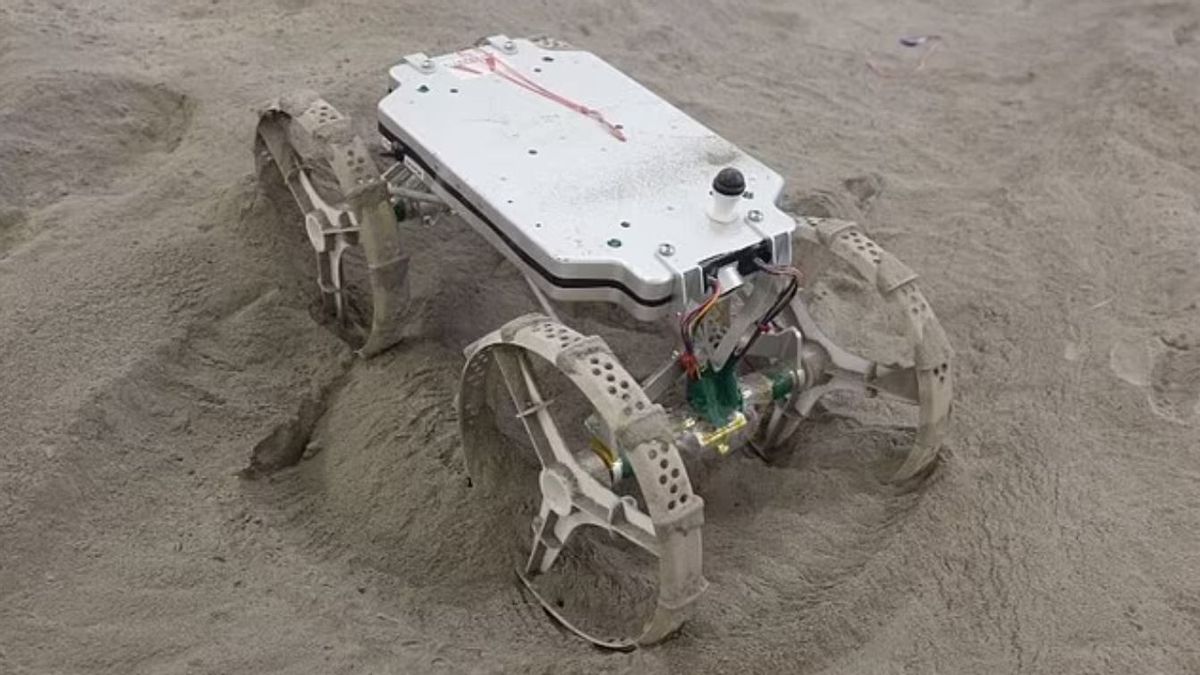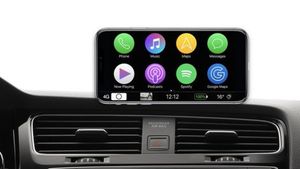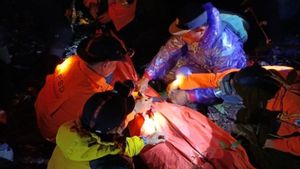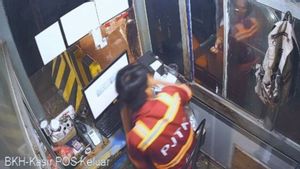JAKARTA – A shoebox-sized robot named Iris is one of the last two robots vying for the chance to become the first US spacecraft to land on the moon in 50 years.
NASA has sent two rover robots to the surface of Mars for decades. Perseverance and Curiosity, currently operating on Mars and sending photos back to Earth.
However, the US-based space agency has not sent a vehicle to explore the lunar surface since the last Apollo landings in 1972 or 50 years ago this year.
Two contractors funded by NASA have vehicles that could launch this year, including Houston-based Intuitive Machines, and Pittsburgh-based Astrobotic.
With contracts worth more than $70 million each, the company could launch to the moon this year with a mix of SpaceX Falcon 9 and United Launch Alliance rockets.
They are part of the NASA Commercial Lunar Payload service, which employs private companies to create service missions on the lunar surface.
One of those rover, named Iris, has already been attached to the Peregrine lander by Astrobotic, which could be sent to the moon in the first half of the year.
Instead, Intuitive Systems is testing the Nova-C lunar lander that will carry a tiny 'spider-like' rover from London-based Spacebit Technologies.
Intuitive has a $77 million contract with NASA for its IM-1 mission, and Astrobotic's Peregrine lander has a $79.5 million contract with NASA for Peregrine Mission 1.
Both are designed to investigate landing sites and resources for the crewed Artemis mission, which is scheduled to be operational from 2025 with the mission of carrying the first woman and the next man to set foot on the lunar surface.
“Priority first is, I hope it works – it is priority number one above all else,” Astrobotic CEO John Thornton said in an interview with UPI.
"We had a good chance to be first, but it's not the driver, it's not a big deal - success is the most important thing," said Thornton.
The company has also used miniaturization technology, similar to the one that packs ever-increasing power into cell phones every year, to create a relatively small vehicle that can travel across the lunar surface.
As reported by Dailymail, the Iris is a CubeRover-class vehicle, inspired by small CubeSats that are also shoebox-sized and conduct experiments in low-Earth orbit.
The company tweeted: "Last week, the team from Astrobotic and NASA Glenn integrated the Lunar Surface Photovoltaic Investigation (PILS) payload into our Peregrine lunar lander."
"This means all NASA payloads & all commercially powered payloads (cargo) flying over the Peregrine have been installed!"
The rover was built by students at Pittsburgh-based Carnegie-Mellon University under a program founded by Professor Red Whittaker, who is Chair of Astrobotics.
Thornton expects Astrobotic to reach the moon first, but 'can't guarantee it' as Intuitive Engine is almost ready.
Intuitive confirmed last week that it had completed tests of its tracking network, which allowed it to communicate with the Nova-C lander once it was on the moon.
"This is an important step towards returning the United States to the lunar surface in our IM-1 mission this year," said Peter McGrath of Intuitive Machines as quoted by Dailymail.
NASA provided funding for seven lunar lander missions - known as CLP missions - with a total investment of less than a billion dollars. In the past, missions like this cost a lot of money per launch.
Astrobotic has reserved space on a United Launch Alliance rocket to get to the moon, while SpaceX's Falcon 9 will carry the Intuitive mission. Both will also carry additional payloads for NASA and commercial customers.
"There's a lot of pieces that have to be put together and COVID-19 has really put a lot of parts into a loop," Thornton said. "You're using high-end stuff which can be really hard to come by in normal times and that's made even more complicated with COVID-19 making that worse."
"We integrated the propulsion system into the spacecraft and we should have the spacecraft ready in a few months," he said. "Then there will be testing and it will roll out to the launch site."
Instead of mission control being at a NASA facility, Intuitive and Astrobotic will control their respective lander missions from their base.
The English, Chinese, Japanese, Arabic, and French versions are automatically generated by the AI. So there may still be inaccuracies in translating, please always see Indonesian as our main language. (system supported by DigitalSiber.id)













